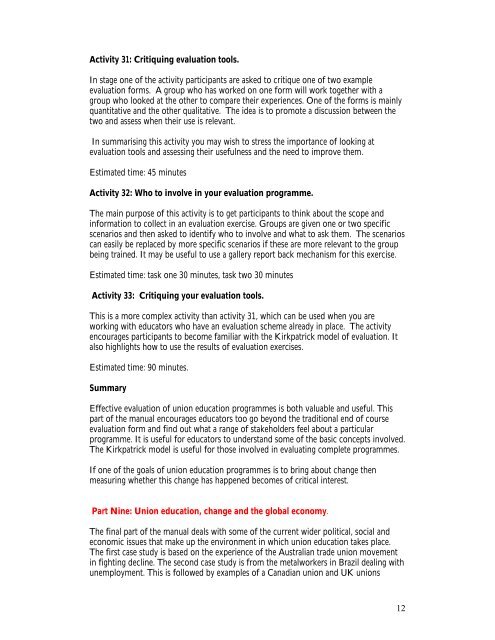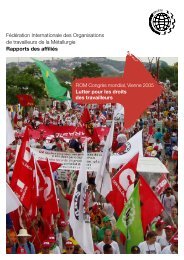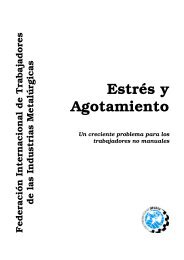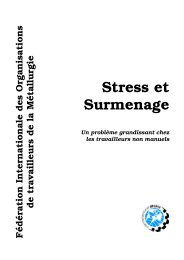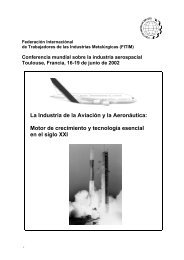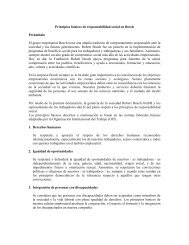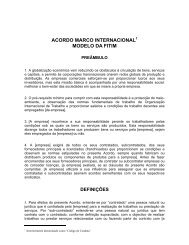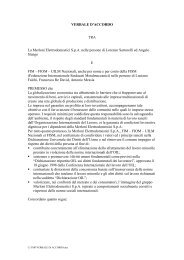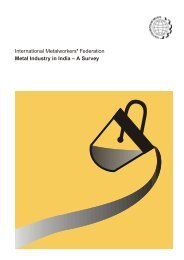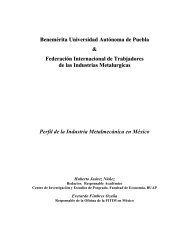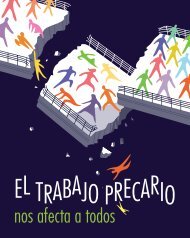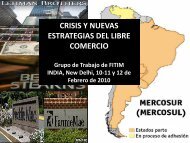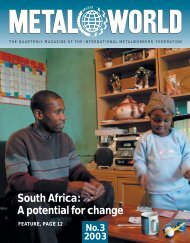Tutor notes: Education Reflection Action (pdf)
Tutor notes: Education Reflection Action (pdf)
Tutor notes: Education Reflection Action (pdf)
You also want an ePaper? Increase the reach of your titles
YUMPU automatically turns print PDFs into web optimized ePapers that Google loves.
Activity 31: Critiquing evaluation tools.<br />
In stage one of the activity participants are asked to critique one of two example<br />
evaluation forms. A group who has worked on one form will work together with a<br />
group who looked at the other to compare their experiences. One of the forms is mainly<br />
quantitative and the other qualitative. The idea is to promote a discussion between the<br />
two and assess when their use is relevant.<br />
In summarising this activity you may wish to stress the importance of looking at<br />
evaluation tools and assessing their usefulness and the need to improve them.<br />
Estimated time: 45 minutes<br />
Activity 32: Who to involve in your evaluation programme.<br />
The main purpose of this activity is to get participants to think about the scope and<br />
information to collect in an evaluation exercise. Groups are given one or two specific<br />
scenarios and then asked to identify who to involve and what to ask them. The scenarios<br />
can easily be replaced by more specific scenarios if these are more relevant to the group<br />
being trained. It may be useful to use a gallery report back mechanism for this exercise.<br />
Estimated time: task one 30 minutes, task two 30 minutes<br />
Activity 33: Critiquing your evaluation tools.<br />
This is a more complex activity than activity 31, which can be used when you are<br />
working with educators who have an evaluation scheme already in place. The activity<br />
encourages participants to become familiar with the Kirkpatrick model of evaluation. It<br />
also highlights how to use the results of evaluation exercises.<br />
Estimated time: 90 minutes.<br />
Summary<br />
Effective evaluation of union education programmes is both valuable and useful. This<br />
part of the manual encourages educators too go beyond the traditional end of course<br />
evaluation form and find out what a range of stakeholders feel about a particular<br />
programme. It is useful for educators to understand some of the basic concepts involved.<br />
The Kirkpatrick model is useful for those involved in evaluating complete programmes.<br />
If one of the goals of union education programmes is to bring about change then<br />
measuring whether this change has happened becomes of critical interest.<br />
Part Nine: Union education, change and the global economy.<br />
The final part of the manual deals with some of the current wider political, social and<br />
economic issues that make up the environment in which union education takes place.<br />
The first case study is based on the experience of the Australian trade union movement<br />
in fighting decline. The second case study is from the metalworkers in Brazil dealing with<br />
unemployment. This is followed by examples of a Canadian union and UK unions<br />
12


